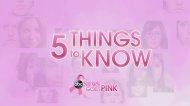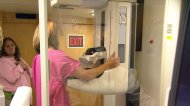When it comes to breast cancer, the biggest risk factor is being a woman. The second factor is getting older. The mammogram is the most basic test to screen for the disease. But for years, the debate over when to begin testing has continued, with a new study adding to the controversy.
Researchers at Harvard University said mammograms in women under age 50 could dramatically cut deaths from breast cancer. The United States Preventive Task Force recommends that women get mammograms starting at age 50. The American Cancer Society advocates for screening to begin at age 40.
With all the differing information, the guidelines can be confusing.
"Most of the breast cancers we see are in older women," explained Dr. V. Merle McIntosh, chief of breast surgery at Englewood Hospital in Englewood, N.J. "They're already in a 'high-risk group' because they're older and they're women."
But in her practice, Dr. McIntosh said that she sees a lot of young women who develop breast cancers in their 20s and 30s. So she recommends that women have a baseline screening even earlier than the official guidelines: at age 35. She said it's an extremely common recommendation from breast surgeons, though not necessarily from primary physicians.
Family history and reproductive history can factor into disease development in young women. But McIntosh cautioned that the reality is that "the majority of women with breast cancer do not have a first-degree family member with breast cancer."
Dense breasts - especially prevalent in younger women - can also make tumor detection difficult. So a mammogram may not be enough.
"Having dense breasts means having much more glandular tissue in the breast than fat," explained Dr. McIntosh. "As we get older, a lot of the glandular tissue in the breast changes and become fatty tissue. Fatty tissue in a mammogram looks sort of gray-black. Tumors look white, so it's very easy to see white tissue on a gray background. But in dense breasts with more glandular tissue, it looks white, so it's hard to see a white tumor on a white background."
In the case of dense breasts, an ultrasound is an excellent screening test, according to McIntosh, preceded by a mammogram. Though because the ultrasound is dependent on the experience of the technician, small tumors can still be missed.
So are there any downsides to having a mammogram at any age?
There is a relatively small radiation exposure. False positives during testing can subject patients to biopsies that they otherwise would not have to have. And there is, of course, the discomfort associated with the test.
"You have to look at the big picture," said Dr. McIntosh. "Do the benefits outweigh the risks of doing these tests? And for mammography, I would say a resounding yes. The benefits far outweigh those risks."




No comments:
Post a Comment